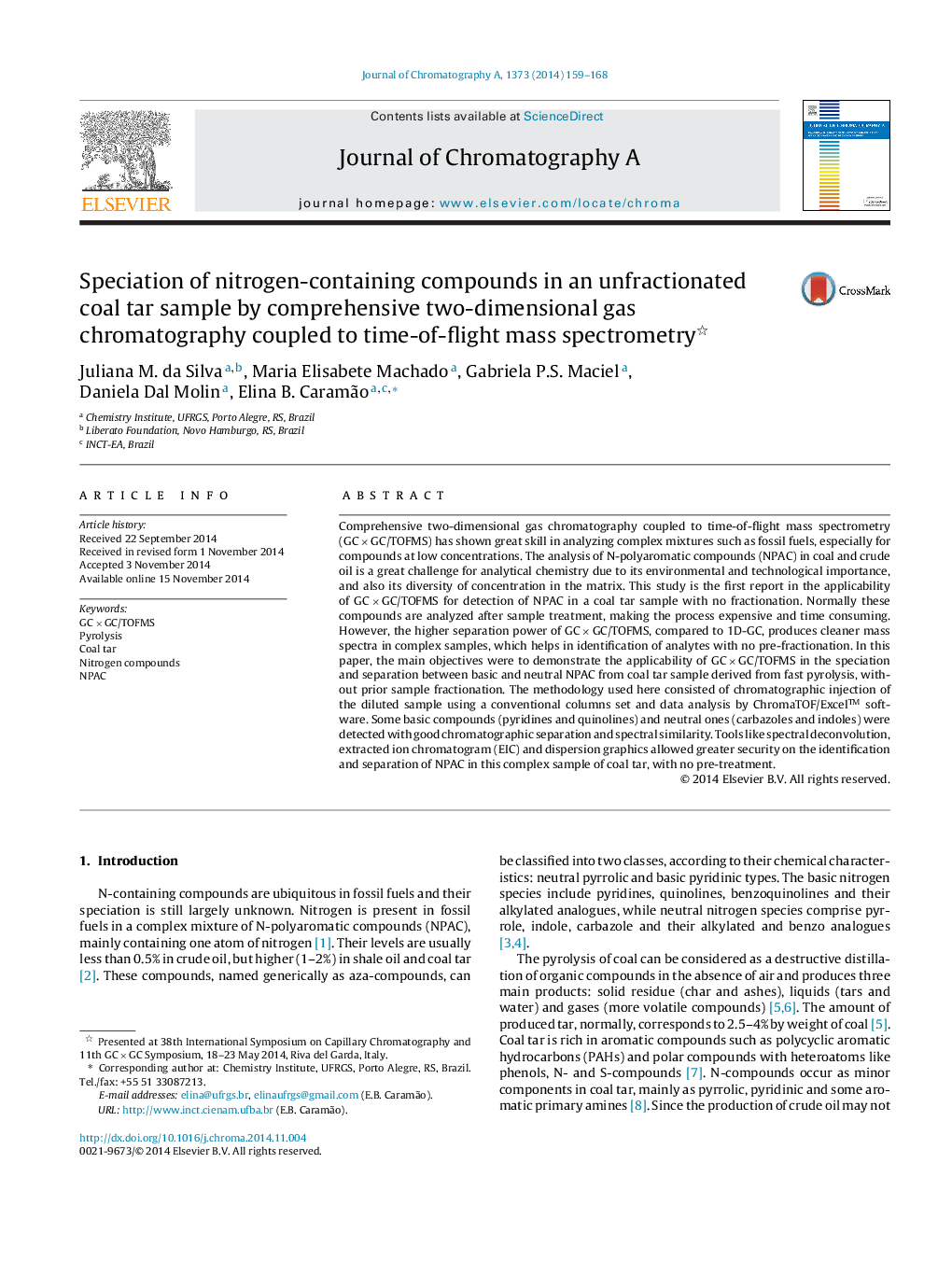| Article ID | Journal | Published Year | Pages | File Type |
|---|---|---|---|---|
| 1202527 | Journal of Chromatography A | 2014 | 10 Pages |
•This study is the first report in the applicability of GC × GC/TOFMS for detection of NPAC in a coal tar sample with no fractionation.•GC × GC/TOFMS allows the separation of basic and neutral NPAC in an unfractionated coal tar sample.•Detection of 112 compounds including basic (pyridines and quinolines) and neutral (carbazoles and indoles) was achieved with excellent separation.•GC × GC/TOFMS provides additional analytical information about complex samples and allows separation and identification in a less time consuming.
Comprehensive two-dimensional gas chromatography coupled to time-of-flight mass spectrometry (GC × GC/TOFMS) has shown great skill in analyzing complex mixtures such as fossil fuels, especially for compounds at low concentrations. The analysis of N-polyaromatic compounds (NPAC) in coal and crude oil is a great challenge for analytical chemistry due to its environmental and technological importance, and also its diversity of concentration in the matrix. This study is the first report in the applicability of GC × GC/TOFMS for detection of NPAC in a coal tar sample with no fractionation. Normally these compounds are analyzed after sample treatment, making the process expensive and time consuming. However, the higher separation power of GC × GC/TOFMS, compared to 1D-GC, produces cleaner mass spectra in complex samples, which helps in identification of analytes with no pre-fractionation. In this paper, the main objectives were to demonstrate the applicability of GC × GC/TOFMS in the speciation and separation between basic and neutral NPAC from coal tar sample derived from fast pyrolysis, without prior sample fractionation. The methodology used here consisted of chromatographic injection of the diluted sample using a conventional columns set and data analysis by ChromaTOF/Excel™ software. Some basic compounds (pyridines and quinolines) and neutral ones (carbazoles and indoles) were detected with good chromatographic separation and spectral similarity. Tools like spectral deconvolution, extracted ion chromatogram (EIC) and dispersion graphics allowed greater security on the identification and separation of NPAC in this complex sample of coal tar, with no pre-treatment.
